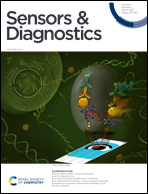Diagnosis of cancer using carbon nanomaterial-based biosensors
Abstract
Cancer causes the death of a large population worldwide. Early-stage tumor detection is the major problem in treating cancer patients effectively. Nanomaterial-based biosensors have emerged as a great tool for diagnosis of many life-threatening diseases including cancer. Various carbon nanomaterial-based biosensors have been evolved for cancer detection; these increase the accuracy of diagnosis in the very early stage of tumor detection. The most common carbon nanomaterial-based biosensors are electrochemical and optical sensors. These biosensors are portable and biocompatible with a long shelf-life and show efficient results in cancer detection, diagnosis, management and treatment. In this review, we summarize various types of electrochemical and optical carbon nanomaterial sensors and their applications, efficiency and usability. This review will also give the background of their fabrication, synthesis and shelf-life, which will help researchers and medical experts to improve and utilize them for cancer diagnosis.

- This article is part of the themed collection: World Cancer Day 2024: Showcasing cancer research across the RSC


 Please wait while we load your content...
Please wait while we load your content...